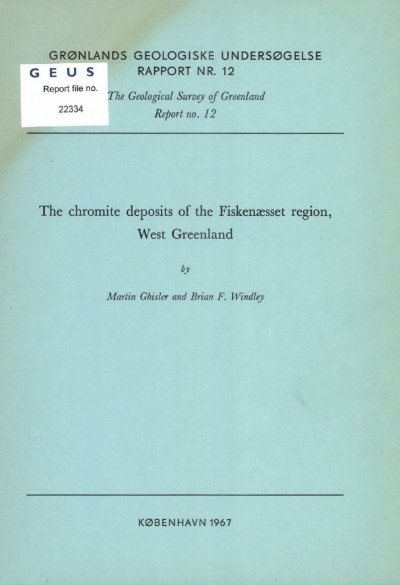The chromite deposits of the Fiskenæsset region, West Greenland
DOI:
https://doi.org/10.34194/rapggu.v12.7160Abstract
The chromite deposits of the Fiskenæsset region occur in anorthosites, which together with intercalated pyribolites (hypersthene amphibolites) and subsidiary pyroxenites and peridotites occur in the gneisses as horizons belonging to a folded and metamorphosed stratiform complex which has a maximum thickness of 2 km. The chromite occurs in horizons which average 0.5 - 3 m in width, reaching a maximum of 20 m, and consist of alternating anorthosite and chromitite layers, usually between 0.5 and 10 cm wide. Chromite horizons occur in almost all of the anorthosite horizons in the region which have a minimum exposed length of 125 km. 175 X-ray fluorescence analyses show that the Cr2O3 content of the chromite varies between 26% and 36%, averaging 32.7%. The total iron oxide content varies between 28% and 42%, averaging 31. 8% (as FeO), with the result that the Cr:Fe ratio varies between 0.66 and 1.05, averaging 0.93. The chromite has a high V2O5 content varying from 0.2% to 0.5% with an average value of 0.3%. The chromite horizons occur along the shores of the fjords or only a few kilometres from the coast in easily accessible terrain that rarely exceeds 500 m in altitude. Fiskenæsset harbour is ice-free for the whole year.
Downloads
Published
Issue
Section
License
This article is distributed under a CC-BY 4.0 licence, permitting free redistribution and reproduction for any purpose, even commercial, provided proper citation of the original work. Author(s) retain copyright over the article contents.


